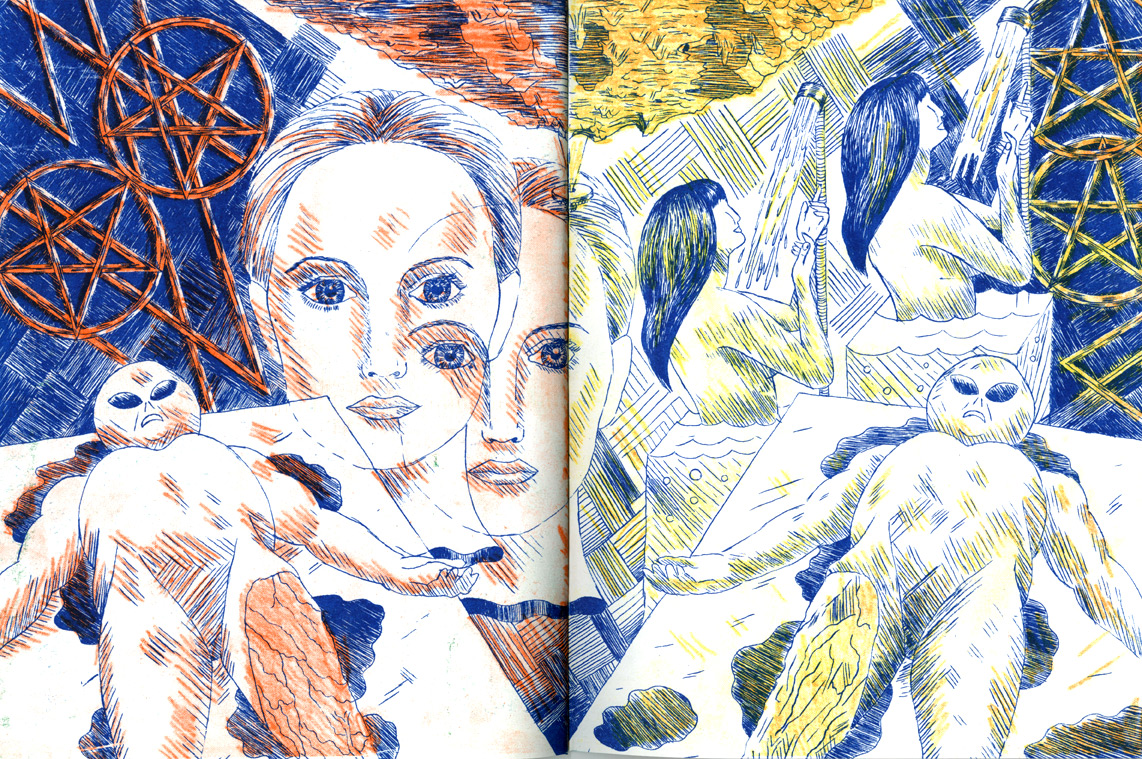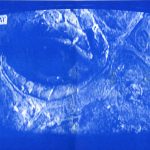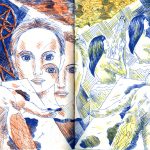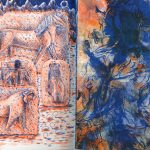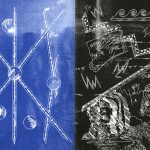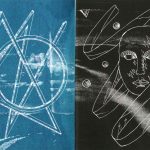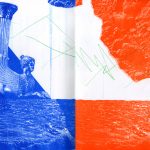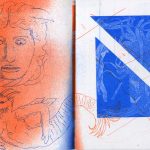Pan Terzis talks to us about Riso, getting your hands dirty and the benefits of doing it yourself.
We’re big fans of SVA’s Riso printers around here. Short for “Risograph”, the silk-screen copy machines have captured our imaginations. And our love was sparked in no small part by Pan Terzis. Pan is a Riso pro. He started teaching our students how to use the amazing printer in Summer 2015, and they ate it up. Check out the end of this post for some of their work.
Pan is a big believer in the tech, and the results are hard to argue with. Here’s some of his Riso work.
We had a chance to ask Pan a few questions about his new Riso classes at SVA, starting in late September (so sign up now!)
Thanks for sitting down with us, Pan. How long have you been working with the Riso?
The first time I got a chance to use a Risograph Duplicator was in 2010, when a friend invited me to use his 1995 model GR 2750.
What appealed to you about Riso printing when you first saw what it could do?
I had already been deeply involved in the underground small publishing scene, and had produced a number of book editions that were being sold by distributors such as Printed Matter, Inc and the now defunct published Picturebox. I’d been using screenprint, laser print and offset printing to make my books, but as a printer I was intrigued by this mysterious sounding print technology.
I was surprised to encounter something that looked like a piece of clunky office technology, but once I got a chance to use it, I was amazed by the vibrant colors and fine detail it was capable of printing, the way it clanked and shook when printing at top speed, and more than anything else the physicality of changing each drum cylinder every time I wanted to print a new color. Using this homely beige box involved opening its guts and carefully replacing a piece of machinery that was heavy and delicate at the same time. It felt like loading a warhead into a nuclear submarine by the office cooler. I loved the smell of the wet ink and the unique Riso texture that develops in large areas of color.
Most of all, it was incredibly empowering. The book had to be ready for a book fair in two days, and I managed to print a 36 page book in an edition of 150 with 52 layers of color in less than twelve hours. To Screenprint that many colors with that quantity would take weeks of backbreaking labor. I was immediately hooked.
That first project was a collaboration of raw and spontaneous drawings and found scraps of imagery with Leon Sadler, a UK based artist who I hadn’t met yet. Most of the material was transferred through email. The Riso felt at once like something out of the past and the future, and using it requires a lot of physical involvement despite the automation, so it conceptually rhymed with our project which was primitive and intuitive formally but facilitated through advanced technology. The collision of the past and the future is a central theme in my work.
We seem so consumed by digital these days, but there’s also a yearning for real stuff. Stuff we can hold in our hands and bend. Your description of the process is a wonderful reflection of that “analog” experience. What challenges and rewards do you experience when you teach people how to ponder the Riso for their own work?
I think the biggest challenge when teaching students to use Risography for their own work is getting them to wrap their minds around the process, its possibilities and limitations. The first concept that someone new to this process needs to understand is how to think in layers of color. In Risography, as in almost all forms of printing, full color images are built up by multiple layers of color. Once this idea is fully grasped one can create images with the purpose of printing them with the Risograph process in mind, so that they’re not starting with a flattened, full color image that they have to figure out how to split up into four six or a dozen colors to get it to look like the original. Of course that can be an interesting problem to tackle, but more with the image as raw material to use as the basis for a print that will be a translation of the original into a totally new, Riso generated image.
Another challenge can be helping students get used to opening up the machine and dealing with its internal workings in order to switch color drums. This is where the analog and digital elements break down-the Risograph is technically a digital printer, but requires manual assistance from a human to select and change its machinery in order to print the proper color, or stack prints and place them in the feed tray when printing three or more colors. In this way I feel that this strange technology reflects the time we are living in-a growing fusion of human and machine in which each struggles to assert its autonomy while still growing increasingly co-dependent.
Fascinating perspective! Tell us about your two classes, RISO Printing: An Introduction and RISO Printing: Zines and Small Publishing
So if you have a project that’s best served by Risograph printing, give Pan’s classes some thought. The money and ramp-up time saved will pay for itself in one project! Thanks for talking to us, Pan. We can’t wait to share the work that comes out of both of your classes with the world!
Font studies for Mellisa Malzkuhn’s project, “The Boy Who Ate Words”.

Ryan Ansel also did his project, The Final Round, on a Riso, with beautiful results:


